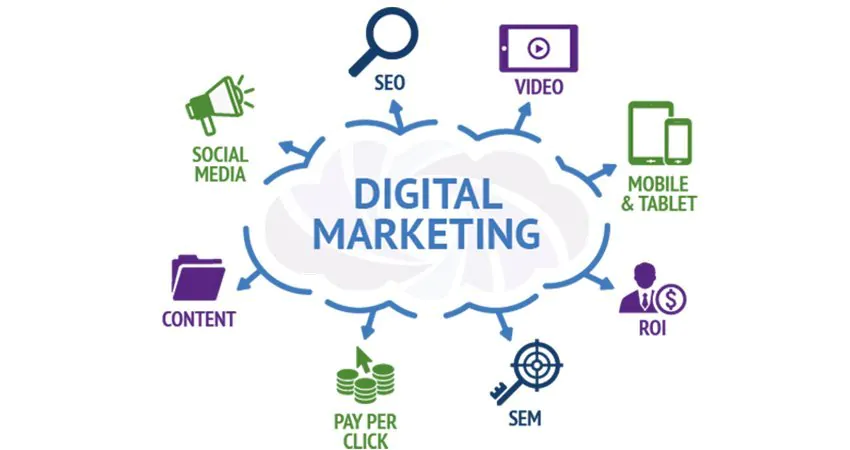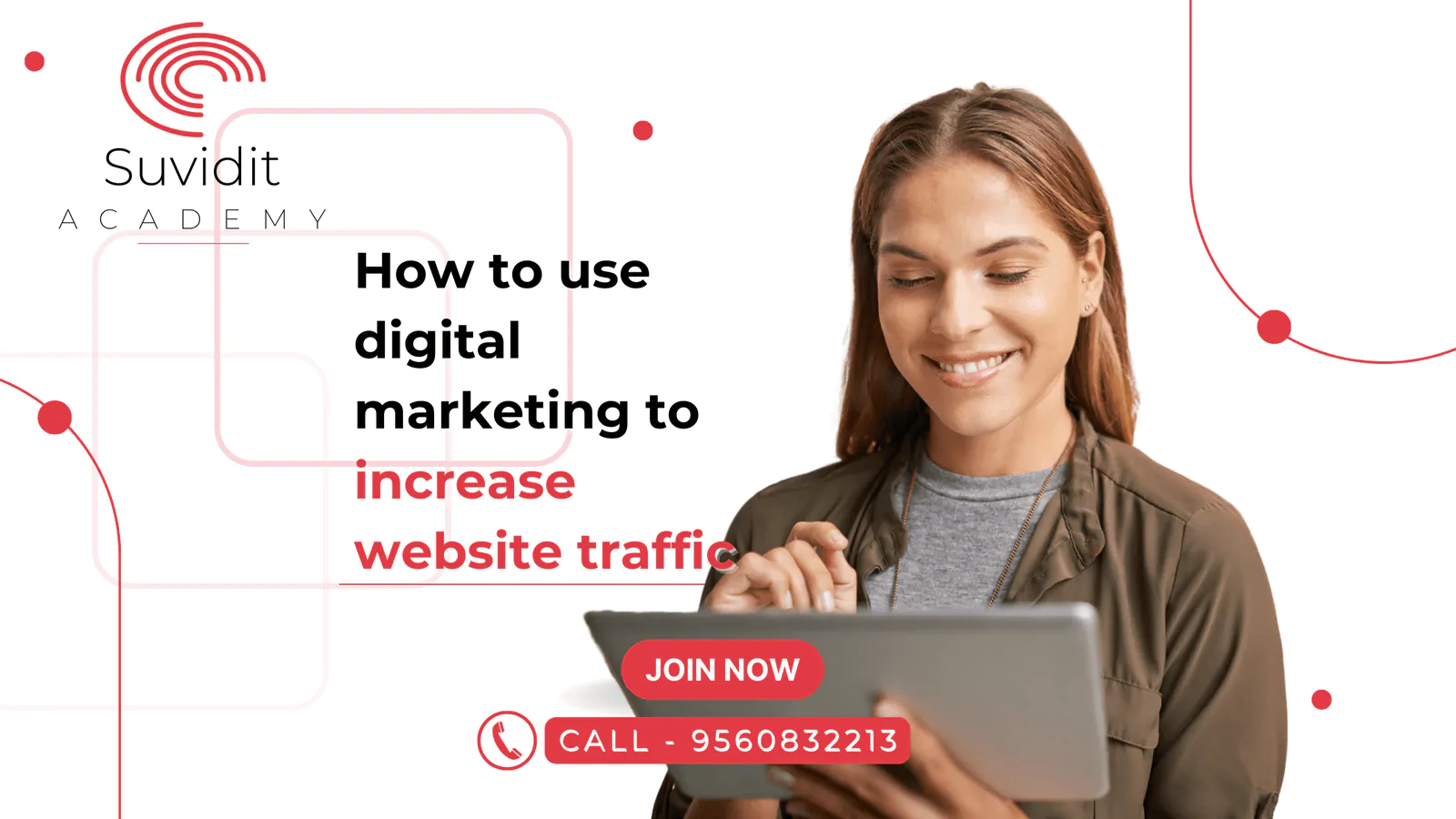Generally speaking, digital marketing is advertising that is distributed via digital channels like search engines, websites, social media, and email. Digital marketing is the practice of promoting products, services, and brands through the use of these online media channels. Consumers rely heavily on the internet to conduct product research. Think with Google marketing insights. For example, it found that 48% of customers start their inquiries on search engines, 33% on brand websites, and 26% on mobile applications.
Today’s digital marketing is a massive network of channels that brands must join, but online marketing is much more complicated than that. Marketers must delve deep into today’s vast and complex cross-channel world to discover strategies that have an impact through engagement marketing in order to realise the full potential of digital marketing. Using the information you’ve gathered over time, engagement marketing allows you to build meaningful relationships with both new and returning customers. Building brand awareness, becoming an industry thought leader, and putting your business at the forefront when customers are ready to buy are all benefits of engaging with customers in a digital environment.
Using an omnichannel digital marketing strategy, companies can learn a lot about their target audience’s habits while also introducing them to new ways of interacting with their customers. This will lead to an increase in employee retention. An Invesp study found that companies with strong omnichannel customer engagement strategies keep an average of 89% of their customers, compared to only 33% for companies with weak omnichannel programs.
There will be an ever-increasing selection of wearable devices available to consumers in the future of digital marketing. In addition, Forbes predicts that social media will become more conversational in the B2B space, video content will be refined for SEO purposes, and email marketing will become more personalised.
Problems that digital marketing can help you with on a regular basis
Digital is a must if you want to get the most out of your marketing efforts. Digital marketing can assist you in learning more about your target audience, as well as provide you with metrics that validate the work of your marketing team.
1) I have no idea where to begin because I have no idea who my audience is. Your marketing team may have developed personas for your audience, but your customers may not behave in the way you expect when they’re online. Different descriptors will pique the interest of different people at different points in the buying cycle, so you’ll need to test different language on a variety of different audiences. You’ll gain a distinct advantage over your competitors if you pay attention to your audience’s needs and desires.
2) I haven’t done any SEO optimization for my channels. If you’re involved in any aspect of marketing, it’s critical that you have a working knowledge of SEO best practices. Additionally, SEO can reinforce and support your campaign testing and optimization to ensure that you’re delivering high-quality, valuable content that your potential customers want.
3) I don’t have a plan for using social media. What matters most is that you have some kind of social marketing strategy in place, whether it’s an entirely organic approach or a more paid one. In addition to promoting your brand, social media can be used to promote digital marketing advertisements. As your following grows, so will the effectiveness of your advertising campaigns, so find a niche and stick to it.
4) There is a problem with my marketing teams being separated. Creating nimble, fluid structures requires breaking out of silos. Rather than relying on a single marketing channel to reach your customers, it’s imperative that you use a cross-channel strategy that includes teams with a variety of skill sets. Each social media platform and channel has a different audience and expectations, so marketing efforts may look completely different for each one. Posting at a specific time of day, for example, can have a significant impact on your audience.
5) My CMO expects me to provide financial data to back up my claims. Metrics in digital marketing provide a wealth of information that can be used to gauge the success of your campaigns, but these metrics must be chosen carefully. Each situation is unique and will depend on your target audience and how much time and effort you devote to each channel. Determine your goals for each channel, and set metrics that your CMO will be most interested in seeing.
Digital marketing’s various components
Customers interact with a vast network of digital touchpoints on a daily basis as a result of digital marketing. A thorough understanding of these channels is required to get the most out of them.
Pay-per-click (PPC) advertising. Ads that appear in the sponsored listings at the top or side of search engine results pages are known as pay-per-click (PPC) advertising (SERP). Because they can be tailored to show up when specific search terms are entered, these ads cost you money with each click they receive. Using data gleaned from individuals’ online behaviour, these ads can be extremely effective because they target the right people at the right time with relevant ads. Retargeting is also used in these ads, which means that marketing automation tools can create personalised cross-platform ads based on the actions of customers.
Optimizing a website for online search (SEO). To rank highly in search engine results, you must optimise your website’s content, technical setup, and reach. This is what SEO entails. Because 90 percent of people searching haven’t yet formed an opinion about a brand, using SEO can help bring visitors to your site when they display behaviour that suggests they’re looking for relevant products (Status Labs, 2018). Despite PPC and retargeting, organic online traffic generated through search engine optimization has a significant impact on search rankings and, consequently, organic site traffic. In order to gain a long-term relationship with a customer, it is important to use keywords and phrases in your content. Search engine optimization (SEO) is the process of enhancing a website’s visibility in organic search results and, as a result, its volume of inbound traffic. Visibility is the first step in building a long-term relationship with a customer, so SEO is critical to digital marketing campaigns.
Public relations through the use of written content. Content marketing is not a form of advertising, but rather a means of educating and inspiring consumers. As a thought leader and a trusted source of information, your marketing efforts are less likely to get lost in the shuffle when you provide relevant content to your audience. A self-directed buyer in today’s market means that content marketing generates three times the number of leads as paid search advertising.
Marketing via social media. Simply having social media accounts isn’t enough for successful social media marketing. For as many opportunities for peer-to-peer sharing as possible, you must incorporate social media into every aspect of your marketing efforts. Your customers are more likely to share your content if they feel inspired to do so, which could lead to new customers for your business.
Email promotion. Email is still the fastest and most direct method of getting critical information to customers after more than two decades. Successful email campaigns today must be incredibly engaging, relevant, informative, and entertaining in order not to get buried in your customers’ inboxes, as well. In order for your marketing emails to be a success, they must meet the following five criteria. They must be trustworthy, relevant, conversational, and coordinated across channels and strategic.
It’s all about mobile advertising. Everywhere we go, we’re constantly checking our mobile devices, from our pockets to our bedsides. Two-thirds of consumers can recall a specific brand they’ve seen advertised on mobile in the last week, which makes marketing on mobile extremely important. However, because of its intimate nature, mobile marketing is also very nuanced. If you want to reach your customers on their mobile devices, you can use SMS, MMS, and in-app marketing, but you also need to think about the coordination of your other digital marketing channels.
Automation in marketing. An essential part of your digital marketing strategy is marketing automation. Increasing revenue by 10% or more in six to nine months is not uncommon for companies that automate lead management. Your campaigns will resemble a half-assembled puzzle if you don’t have it. When you use marketing automation software, you can cut down on the time and effort it takes to run your digital marketing campaigns and increase your revenue. This type of tool can provide metrics that allow you to assess the impact of digital marketing on your company’s bottom line and identify which programmes are working and which aren’t.
A successful digital marketing campaign’s return on investment
Organic content marketing is a major player in the digital marketing space as well as a significant component of return on investment (ROI) in digital marketing.
- Digital marketing has the ability to communicate with customers in ways that traditional advertising cannot. When it comes to learning about products, 71% of internet users prefer content over ads (MDG, 2014).
- Content marketing is influenced by digital marketing. It’s no surprise that social media, e-newsletters, articles on your website, blogs, and in-person events make up the majority of B2B content marketing tactics (source).
- SEO relies heavily on digital marketing. Google’s first organic search results account for 32.5 percent of a search term’s total traffic (Chitka)
Plan, develop, and improve your digital marketing strategy.
Determine your audience and goals, and then put metrics in place to ensure that you’re constantly improving.
Step 1: Identify and segment your target audience as the first step. A personalised experience is now expected at every touchpoint. As a result, you must have a thorough grasp of the people you’re trying to reach as well as their particular set of demographic, firmographic, and technological characteristics.
Step 2: Define objectives and a measurement plan. Establish your goals and metrics based on a clear understanding of your target audience by creating personas based on the data you collect. It’s important to track metrics such as impressions, clicks, CTR, engagement rate, conversions, cost per lead (CPL), effective cost per thousand (eCPM), and back-end metrics such as ROI, ROAS, first and multi-touch attribution, and lifetime customer value (LCV).
Step 3: Adtech and channels are set up in step three. Since learning about advertising technologies takes time, make sure you’ve set up the right data management platforms, demand-side platforms, supply-side platforms, and ad exchanges beforehand. Your team should be in sync with each other and their goals should be clearly communicated.
Step 4: In the fourth and final step, you’ll launch your project and fine-tune it. Digital marketing can be used to acquire, nurture, build customer loyalty, and brand customers.. To become a leader in this high-impact, high-demand industry, it is critical that you monitor your metrics on a regular basis.
You can learn more about how to get digital marketing to work for you by joining Suvidit Academy‘s Digital Marketing Course.







